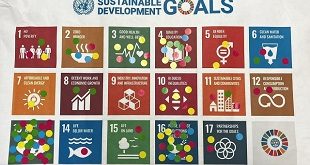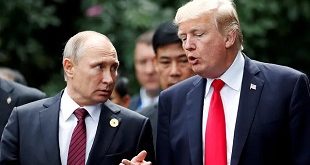
By Andrew M. Mwenda
Opening the black box of East Asia and Sub-Saharan Africa to expose the initial conditions in each region in 1960
The Nobel laureate in economics, Robert Lucas, once said that when you begin thinking about development, you cannot stop. I suffer this disease as well. One subject that intrigues me is the constant comparison of the rate of economic transformation achieved by the so-called Asian Tigers; Hong Kong, Singapore, Taiwan, and South Korea with that of Sub-Saharan Africa countries.
The African countries are often condemned for failing to perform as its counterparts in East Asia. I used to be an adherent of this view and reached the road to Damascus only slowly.
It seems to me that “development” in form of transformative change is a result of many exogenous and endogenous factors interacting in ways that are not yet fully understood. It seems apparent however that rapid change of any country depends on what may be called its “initial conditions”; its historical, political, and geography advantages.
No ruler of any traditional African kingdom of the 1880s; like the Kabakas of Buganda, however visionary and great, could have launched an industrial revolution then taking place in Europe. Equally no king of Britain in 400AD (when the last Roman troops left that island) could have initiated the internet revolution.
A common argument in this debate is that South Korea and Ghana had almost the same per capita income in 1960. Today, South Korea’s per capita income is ten times that of Ghana; US$32,000 to US$3,200.
Since the advocates of this view discuss South Korea, Taiwan, Ghana or Uganda as if it were a black box, the purpose of this article is to open it and at least take a peek at a small part of its inside. But this is a newspaper article and not a book.
I will, therefore, select a few factors to illustrate my point, recognising that there are many others that have shaped the development outcomes of these two regions than can be compressed in 1,000, leave alone two pages. I am also aware that there are exceptions and divergences or even counter-narratives to the story I am going to tell. However, these don’t take away the fundamental basis of my argument.
Taiwan and South Korea were poor in 1960 in terms of per capita income, but many studies show that their social indicators placed them among the ranks of countries at several times their income levels. For example, in 1967, Adelman and Morris did an index of social-economic development for a range of countries as measured in the late 1950s and 60s.
The index was derived from factor analysis and was based on a large number of indicators meant to capture characteristics such as social structure and social organisation. They included the level of urbanisation, importance of an indigenous middleclass, social mobility, literacy levels (availability of human capital), mass communications, cultural and ethnic homogeneity, national integration, and a sense of national unity and modernisation outlook.
Aldeman and Morris’ index placed Taiwan and South Korea in the most advanced group of countries even though their per capita income was considerably below average. This study showed that they had the “initial conditions” necessary for rapid development; their governments only needed to remove coordination bottlenecks.
All Sub Sahara African countries in the study were at the bottom of the pile in the index. One illustrative factor was school enrollment and literacy rates (human capital), which we can use as a proxy for availability of skills to manage complex modern institutions but also an important basis for sustaining progressive politics.
By 1940, Taiwan had 60 percent of primary school age going kids (both girls and boys) enrolled in school; same as South Korea, which also had 43% secondary school enrollment. Uganda had 10% primary school enrollment in 1940, 2% in junior secondary and less than 0.3% in technical education and senior secondary.
In fact, student enrolment as a percentage of overall population in South Korea in 1954 (at the end of the civil war) was 17%; higher than England and Wales (15%), Germany (13%) and only lower than USA (22%) and Japan (23%).
Student enrolment as a percentage of the population in 1954 in Uganda was less than 2%. And Uganda was one of the most “highly” educated nations in Africa. Take the example of other African countries: at independence in 1960, the whole of DRC had only 15 university graduates, Tanzania 9, Rwanda and Burundi zero.
Assuming any of the presidents in these countries wanted to industrialise their country, they would have had to rely on illiterate peasants to build and run not just factories but a complex set of modern institutions to manage industrial policy – which is an absurd proposition.
There were no skills to sustain rapid technical change. But this also means that Africa lacked basic social infrastructure (in form of a critical mass of exposed and enlightened population) to sustain civilised politics.
At independence in 1962, Uganda had only one battalion of 700 illiterate and semi-educated soldiers under the Kings African Rifles. Idi Amin, with only three years of schooling, was the most senior officer in the Uganda army and was among the most educated.
At the time of the Amin coup in 1971, the Ugandan army had grown “rapidly” to 8,500 officers and men – mostly of little or no education. The educated were a tiny fraction. It should not surprise anyone that any military coup in Uganda at that time could only produce rule by a lumpen militariat. When in 1997, I interviewed Gen. Mustapha Idris, he told me that he learnt to write his name after Amin had appointed him vice president and minister of defense.
At the time of the 1961 coup by Park Chung Hee, the South Korean army could boast of more than tens of thousands of university graduates in its ranks including engineers, doctors, lawyers and other professionals. Park was surrounded by officers with a high level of formal education many of who had been with him in South Korean, Japanese and American military academies.
The South Korean army was large and mechanised; its officers had experience in managing a large, complex, and highly resourced institution. In 1965 South Korea deployed over 320,000 troops to support the American army in Vietnam against the communist guerrillas.
By 1940, South Korea had a well-developed manufacturing sector. Even though most industries were owned by the Japanese, about 25% of manufacturing plants were owned, run, and managed by Koreans. So different was the structure of the economy of South Korea compared to that of any African country that by 1965 agriculture contributed 16% of that nation’s exports, manufacturing 63%; agricultural exports contributed only 12% of total export earnings in 1949 and 5.6% in 1955.
The comparable figures for Uganda in 1965 were agriculture contributing 90% of all export earnings (of this, 70% came from cotton and coffee alone) while manufacturing was at 4%. In the same year, 90% of all Ugandans depended on agriculture for their incomes – 75% were involved in subsistence farming. The difference between Taiwan and South Korea vis a vis Uganda could partly be the level of development of the society in 1960.
But it is also due to the nature of the colonial regime. South Korea and Taiwan under Japanese colonialism went through land reform that swept away the power of absentee landlords while the British consolidated these in Uganda. According to Robert Wade, a good communications infrastructure was laid down in Taiwan during Japanese rule designed not with the narrow purpose of extracting some primary raw materials (as British colonialism did) but with the aim of increasing production of smallholder rice and sugar, that were demanded in Japan.
Wade’s study shows that under these policies, expansion in irrigation and drainage, dissemination of improved or better seeds and the spread in the use of fertilizers and manures were all energetically done sometimes even with the aid of the police. He also shows that farmers were grouped into farmers’ cooperatives, irrigation associations and landlord-tenant associations, which accelerated the spread of technical knowledge.
Meanwhile, colonialism in Africa resisted such organisation. This promotion of an agriculture based on a smallholder cultivation of the staple food crops in Taiwan by the Japanese differs from other colonial experiences. In Uganda, only the cultivation of cotton and coffee, which were not locally consumed, were enforced.
Wade also shows that in case of industrial development, Japanese colonialism differed from others by bringing industry to labour and raw materials rather than the other way round. “During the 1930s, prompted by raising wages in Japan and by government’s plan for war, the Japanese in Taiwan developed such industries as fruit processing, textiles, pulp and paper, cement, chemical fertilisers, aluminum and copper refining, petroleum refining and ship building.”
 The Independent Uganda: You get the Truth we Pay the Price
The Independent Uganda: You get the Truth we Pay the Price



